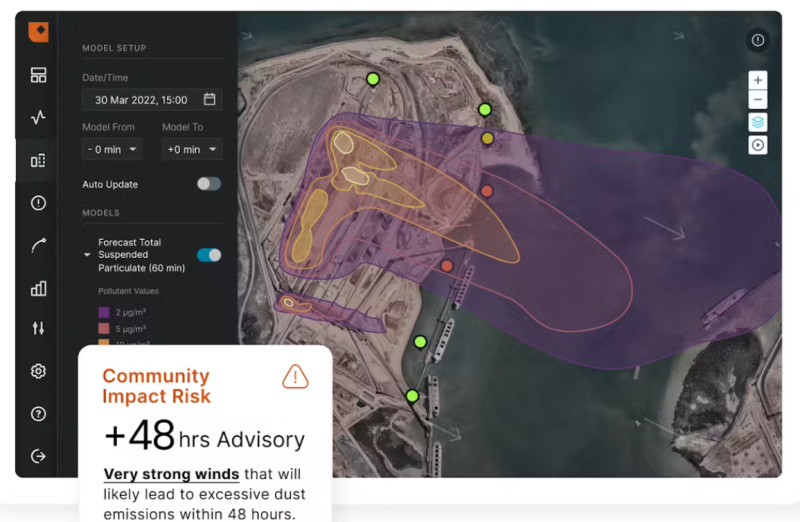In the realm of environmental concerns, both ambient air quality and climate change stand as significant challenges facing our planet. While often considered separately, these issues are deeply intertwined, each exerting a profound influence on the other. Understanding the connections between ambient air quality monitoring and climate change is crucial for developing effective strategies to mitigate their impacts and safeguard public health and the environment.
The Intersection of Ambient Air Quality and Climate Change
Ambient air quality refers to the condition of the air in outdoor environments, encompassing the presence of pollutants such as particulate matter, nitrogen oxides, sulphur dioxide, ozone, and carbon monoxide. These pollutants have detrimental effects on human health, contributing to respiratory diseases, cardiovascular problems, and environmental degradation.
Climate change, on the other hand, refers to long-term shifts in temperature patterns, precipitation, and weather extremes caused primarily by greenhouse gas emissions. The most prevalent greenhouse gases include carbon dioxide (CO2), methane (CH4), and nitrous oxide (N2O), which trap heat in the Earth’s atmosphere and lead to global warming.
The Sources of Air Pollution and Greenhouse Gas Emissions
Both air pollution and greenhouse gas emissions stem from a variety of human activities, including
1. Fossil Fuel Combustion
Burning fossil fuels for energy production, transportation, and industrial processes releases a cocktail of pollutants and greenhouse gases into the atmosphere.
2. Industrial Activities
Industrial processes such as manufacturing, mining, and construction emit pollutants and greenhouse gases through combustion, chemical reactions, and waste disposal.
3. Agricultural Practices
Agricultural activities, including livestock farming and crop production, release methane and nitrous oxide through enteric fermentation, manure management, and fertiliser use.
4. Deforestation and Land Use Changes
Clearing forests for agriculture, urban development, and logging reduces the Earth’s capacity to absorb carbon dioxide, contributing to higher atmospheric concentrations of greenhouse gases.
Feedback Loops and Amplifying Effects
The connections between ambient air quality and climate change are complex and multifaceted, involving feedback loops and amplifying effects that exacerbate both issues. For example
1. Air Pollution and Climate Forcing
Certain air pollutants, such as black carbon (soot) and methane, have potent warming effects on the climate, known as climate forcings. Black carbon absorbs sunlight and heats the atmosphere, while methane is a highly potent greenhouse gas.
2. Climate Change and Air Quality
Climate change can influence ambient air quality through changes in weather patterns, temperature inversions, and atmospheric circulation. These factors can affect the dispersion and concentration of air pollutants, leading to localised air quality degradation.
3. Air Quality Impacts on Climate Feedbacks
Air pollutants can alter atmospheric processes and feedback mechanisms that regulate the Earth’s climate system. For example, aerosols can influence cloud formation and precipitation patterns, affecting regional climate variability and precipitation distribution.
Mitigation Strategies and Co-benefits
Addressing both ambient air quality and climate change requires integrated approaches that consider their interconnected nature. By implementing mitigation strategies that target familiar sources of air pollution and greenhouse gas emissions, society can achieve co-benefits for public health, environmental protection, and climate resilience. These strategies may include
1. Transitioning to Clean Energy
Shifting away from fossil fuels towards renewable energy sources such as solar, wind, and hydroelectric power reduces emissions of both air pollutants and greenhouse gases.
2. Improving Energy Efficiency
Enhancing energy efficiency in buildings, transportation, and industrial processes reduces energy consumption and associated emissions, improving air quality and mitigating climate change.
3. Promoting Sustainable Land Use
Protecting and restoring natural ecosystems, including forests, wetlands, and grasslands, enhances carbon sequestration and air quality regulation, mitigating the impacts of both air pollution and climate change.
4. Investing in Low-Emission Transport
Encouraging the use of public transportation, electric vehicles, and active modes of transport such as walking and cycling reduces emissions from the transportation sector, improving air quality and reducing carbon emissions.
5. Regulating Industrial Emissions
Implementing stringent emissions standards and pollution controls for industrial facilities reduces air pollutant emissions and greenhouse gas emissions, protecting public health and the environment.
Conclusion
In conclusion, the link between ambient air quality and climate change underscores the need for comprehensive and coordinated actions to address these interconnected challenges. By recognising the familiar sources and impacts of air pollution and greenhouse gas emissions, society can develop strategies that deliver co-benefits for human health, environmental sustainability, and climate resilience. Through collective efforts at the local, national, and global levels, we can work towards a cleaner, healthier, and more sustainable future for all.
Article Submitted By Community Writer




